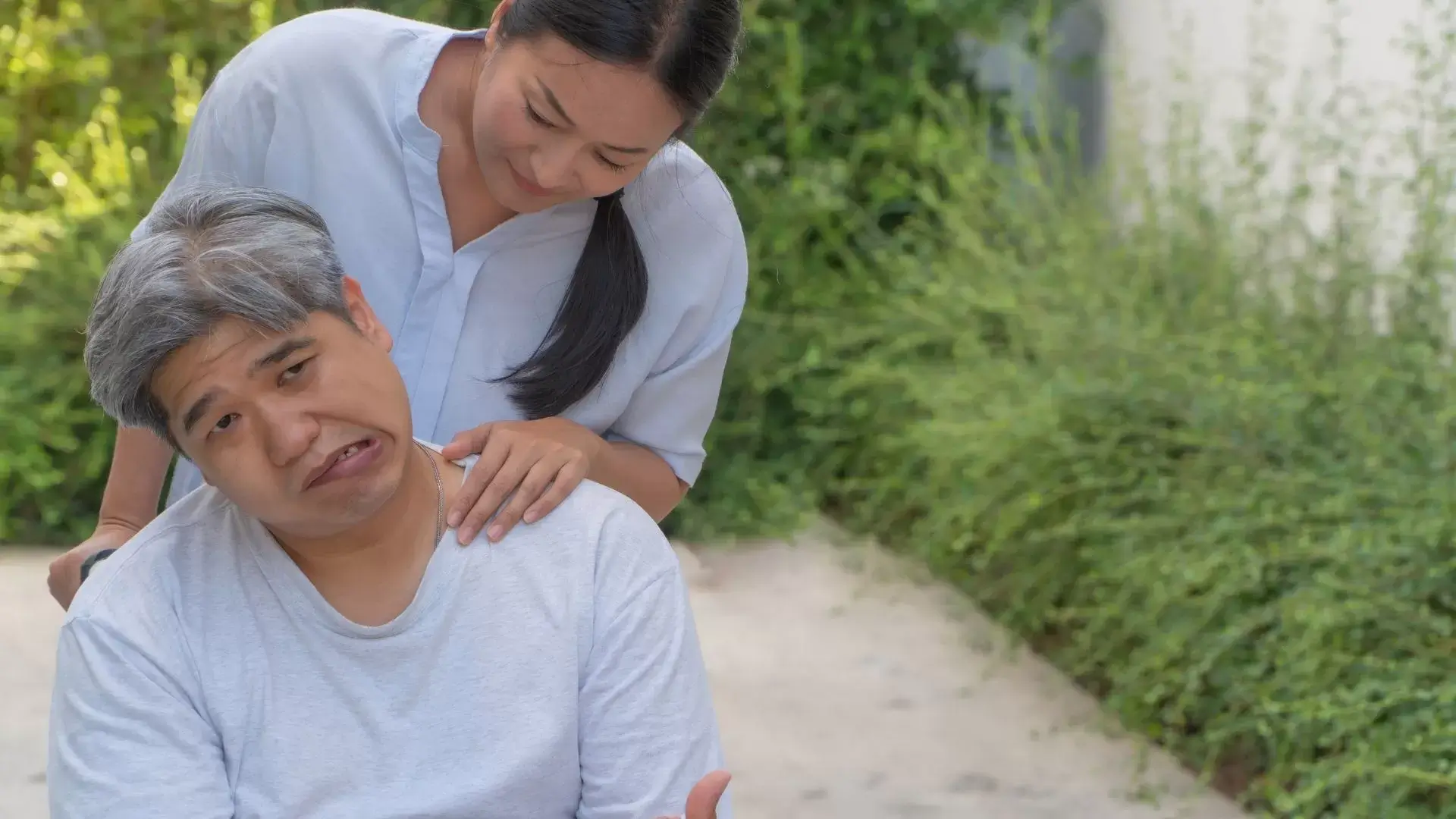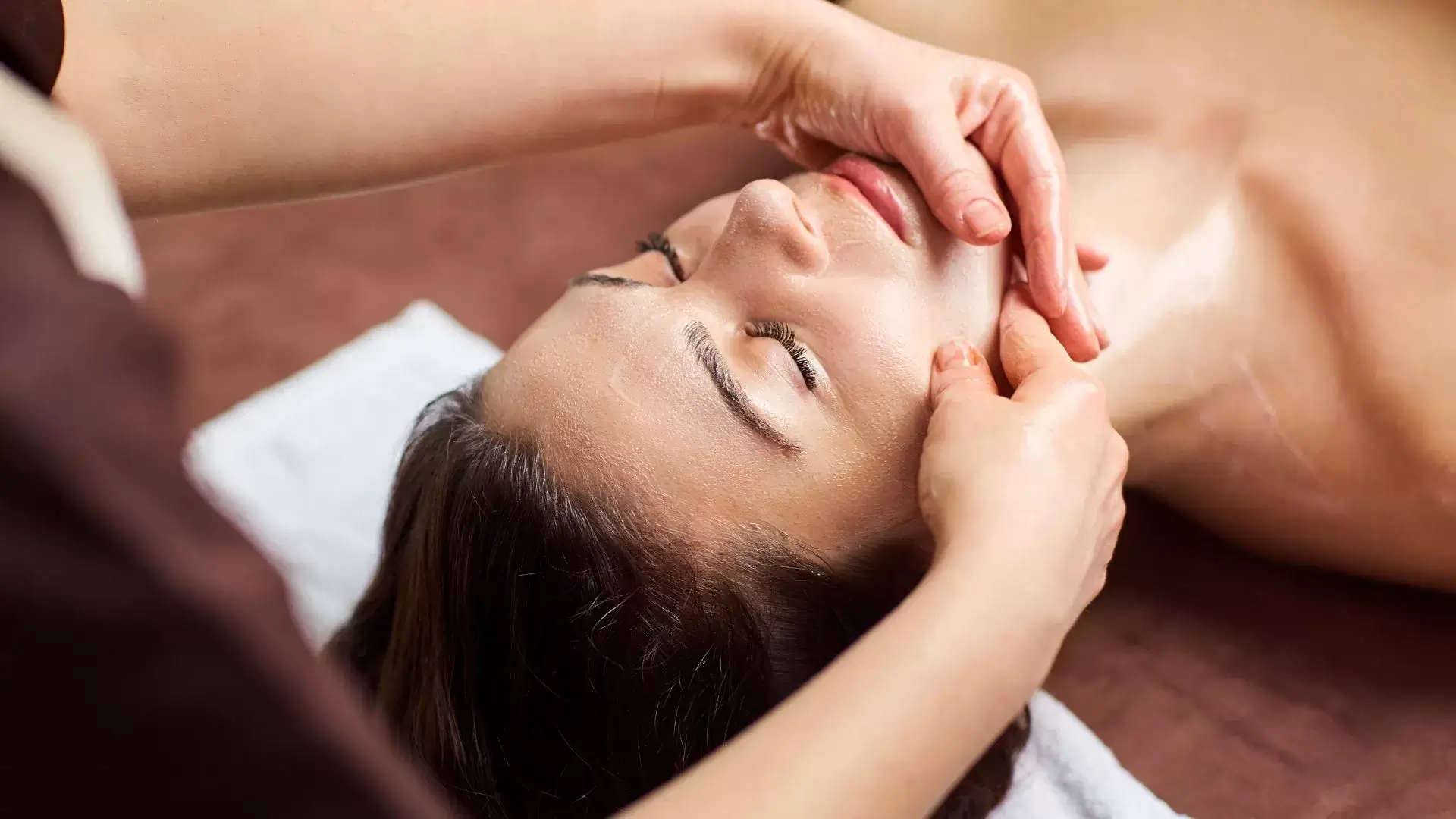We recognize that physiotherapy for Bell’s Palsy plays a crucial role in managing this condition in Mississauga. This condition can greatly impact facial movement and expression, leading to emotional and functional challenges. Through tailored physiotherapy techniques, we help re-educate facial muscles, improve symmetry, and enhance coordination. Our approach includes facial massage, exercise therapy, and neuromuscular retraining, all aimed at restoring strength and control. We also emphasize the importance of eye care and emotional support during the recovery process. By choosing our Expert Physiotherapy in Mississauga, you’re taking an important step toward recovery, and there’s more we can share to help you on this journey.

At Mississauga Physio Chiro Clinic, we offer extensive physiotherapy and chiropractic services tailored to support individuals recovering from Bell’s Palsy. This facial nerve disorder can lead to significant facial weakness, impacting daily life. Our approach integrates physical therapy techniques alongside specialized facial exercises designed to enhance muscle re-education and restore movement.
We focus on neuromuscular retraining, enabling effective communication between the brain and affected facial muscles. Our skilled therapists assess each patient’s needs and create a personalized treatment plan, ensuring a thorough recovery process. Additionally, we incorporate acupuncture for Bell’s Palsy as a holistic treatment option, which may help alleviate discomfort and promote healing.
Pain management is an essential component of recovery from Bell’s Palsy, and our team utilizes various strategies to address this. We provide education on self-care techniques and lifestyle modifications that can further support recovery. Our compassionate environment fosters healing, allowing us to guide patients through their journey towards regaining facial functionality. We’re committed to empowering individuals with the knowledge and tools they need to overcome the challenges associated with Bell’s Palsy, ensuring a smoother and more effective recovery process.
Understanding Bell’s Palsy is important, as it profoundly affects facial movement and function, leading to challenges in everyday activities and emotional expression. This condition, characterized by unilateral facial paralysis, results from facial nerve palsy, causing facial muscle weakness on one side of the face. Patients often experience a drooping face, facial asymmetry, and a noticeable loss of facial expression, making communication and social interactions difficult.
The impact of Bell’s Palsy extends beyond physical symptoms; individuals may also struggle with self-esteem and emotional well-being. Eye care for Bell’s Palsy becomes essential, as the inability to close the eye properly can lead to dryness or injury. Understanding the recovery timeline is critical for both patients and caregivers, as most people begin to see improvement within weeks, although complete recovery can take months.
Recognizing the symptoms of Bell’s Palsy is essential for early intervention and effective management of facial paralysis. This condition typically manifests as sudden facial paralysis, often affecting one side of the face. At 1834 Lakeshore Rd W #6C, Mississauga, ON L5J 1J7, we often see patients presenting with facial numbness, eyelid drooping, and mouth drooping. These symptoms arise from inflammation of the facial nerve, specifically cranial nerve VII.
Taste loss may also occur, impacting the enjoyment of food and beverages. Additionally, individuals might experience dry eyes due to an inability to close the eyelid completely, leading to discomfort and potential complications.
It’s vital for us to be aware of these signs, as early recognition allows for timely physiotherapy interventions that can greatly improve recovery outcomes. If we notice these symptoms in ourselves or loved ones, seeking medical advice promptly can make a difference. Understanding the implications of facial nerve inflammation helps us empathize with those affected, guiding us towards supportive care and rehabilitation strategies. Together, we can foster awareness and encourage proactive measures for managing Bell’s Palsy effectively.
Facial nerve palsy can arise from various underlying causes and risk factors, including viral infections, trauma, and certain medical conditions that compromise the immune system. The seventh cranial nerve, responsible for facial movement, can become inflamed due to a viral infection, leading to what’s often termed idiopathic facial paralysis. This inflammation of the facial nerve can result in significant nerve dysfunction, causing the characteristic symptoms we recognize.
In some cases, stress management plays an essential role in mitigating the risk of recurrent Bell’s palsy. High-stress levels can affect our immune system support, making it more vulnerable to infections that could trigger episodes. Additionally, chronic Bell’s palsy may develop if the initial inflammation leads to lasting nerve damage.
When evaluating a patient, careful differential diagnosis is vital to rule out other conditions that mimic facial nerve palsy. Understanding these causes and risk factors enables us to foster a supportive environment for recovery. By addressing these underlying issues, we can better prepare ourselves for effective treatment and rehabilitation, ultimately aiding in our journey toward recovery from this challenging condition.

Engaging in physiotherapy can greatly enhance our recovery process from Bell’s palsy by promoting muscle re-education and improving facial symmetry. As we navigate this neurological disorder, physiotherapy serves as a foundation of our rehabilitation. A tailored physiotherapy program may include facial massage, which helps reduce muscle tension and fosters blood circulation, essential for healing.
Incorporating exercise therapy, we can target specific facial muscles to regain strength and control. This approach not only aids in physical recovery but also supports emotional well-being. For some, combining occupational therapy and speech therapy with physiotherapy can further enhance our functional abilities and communication skills.
Moreover, we should consider holistic treatments for Bell’s palsy that complement our physiotherapy sessions. These may include stress management techniques and nutritional support, all of which contribute to a more thorough recovery strategy. In cases where recovery is incomplete, options like facial reanimation surgery can be explored, although physiotherapy remains fundamental in preparing us for such interventions. Ultimately, by actively participating in our physiotherapy journey, we empower ourselves to regain facial function and improve our quality of life.
Effective muscle re-education exercises are essential for us to regain strength and control in our facial movements following Bell’s palsy. These exercises for strength and control specifically target the affected facial muscles, helping to combat the nerve damage associated with this condition. By engaging in regular facial muscle re-education, we can reduce symptoms such as facial twitching and improve our overall function.
As we commence our rehabilitation journey, it’s important to incorporate a variety of techniques, including holistic treatments for Bell’s palsy. Complementary approaches, like acupuncture for Bell’s palsy, may also enhance our recovery by promoting circulation and reducing inflammation.
In our sessions, we’ll focus on gradual movements that stimulate the facial muscles, ensuring we maintain a careful balance to avoid overexertion. This tailored approach can greatly impact the prognosis of Bell’s palsy, often leading to improved outcomes.
Through consistent practice, we can expect to see improvements in our facial symmetry and coordination, ultimately fostering a sense of confidence in our daily interactions. Together, we’ll navigate this journey towards recovery, embracing each small victory along the way.
Restoring facial symmetry is a fundamental aspect of our rehabilitation process, and neuromuscular retraining plays a key role in achieving this goal. For those experiencing temporary facial paralysis, this specialized training helps to re-establish muscle control and coordination. Through targeted exercises, we can effectively stimulate the affected muscles, promoting symmetry and function.
In conjunction with neuromuscular retraining, we may incorporate techniques such as electrical stimulation therapy to enhance muscle activation. Some patients find relief through acupuncture for Bell’s palsy, which can complement our rehabilitation efforts. While corticosteroid treatment is essential in the early stages, we also recommend supportive measures like artificial tears to manage dryness and vitamin B12 for nerve healing.
For those dealing with chronic Bell’s palsy, our approach remains patient-centered. We work together to explore home remedies for Bell’s palsy, ensuring that each individual feels empowered in their recovery journey. While facial plastic surgery may be considered for long-term cosmetic concerns, our primary focus is on restoring function and symmetry through evidence-based methods. By prioritizing neuromuscular retraining, we aim to foster both physical and emotional well-being in our patients.
Facial massage and manual therapy can play a crucial role in stimulating nerve recovery for individuals affected by Bell’s palsy. These techniques promote circulation, reduce muscle tension, and enhance overall facial function. By incorporating facial massage into our treatment plan, we provide a holistic approach to recovery that complements other interventions.
In our sessions, we focus on gentle manipulation of the facial muscles, which can help alleviate discomfort and improve mobility. We often combine this with heat therapy to relax the muscles, while cold therapy can be applied to reduce inflammation. For those experiencing bell’s phenomenon, where the eye cannot close fully, we emphasize eye care for Bell’s palsy, ensuring the eye remains protected and hydrated.
While many patients explore home remedies for Bell’s palsy, it is important to remember that the prognosis of Bell’s palsy is generally positive. By integrating manual therapy with other treatments, we can enhance the recovery process. Our commitment to providing thorough care allows us to support individuals on their journey toward regaining facial symmetry and function. Together, we can navigate the challenges of Bell’s palsy and foster a path to recovery.

In addition to manual therapy, using electrical stimulation can greatly aid in activating and strengthening the facial muscles affected by Bell’s palsy. This therapeutic approach can help combat the effects of nerve compression and facilitate recovery during our rehabilitation process. By applying electrical stimulation, we can effectively activate facial muscles that may have weakened due to the condition, enhancing their overall function.
In physiotherapy, we find that this technique not only promotes muscle strength but also improves coordination in facial movements. It complements other holistic treatments for Bell’s palsy and can be integrated with home remedies for bell’s palsy to optimize recovery. As we engage in this therapy, we closely monitor our progress, ensuring that we adapt the intensity and duration of stimulation to meet individual needs.
Research suggests that early intervention using electrical stimulation can positively influence the prognosis of Bell’s palsy, aiding in faster recovery times. By embracing this method, we empower ourselves in our journey toward regaining facial symmetry and function, ultimately improving our quality of life.
Managing inflammation and pain is crucial for anyone dealing with Bell’s palsy, and heat and cold therapy can provide effective relief during recovery. As we navigate the discomfort, such as ear pain, jaw pain, and hypersensitivity to sound, we can utilize these therapies to aid our healing process.
Cold therapy is particularly beneficial in the early stages, as it helps to reduce swelling and numb painful areas. Applying a cold compress for 15-20 minutes can alleviate discomfort linked to excessive tearing and dry mouth. On the other hand, heat therapy can be employed later in our recovery. It promotes blood circulation and relaxes tense muscles, which is helpful for chronic Bell’s palsy symptoms. We might find relief by using warm compresses on the affected areas.
Incorporating these methods into our routine can also complement home remedies for Bell’s palsy, allowing us to manage inflammation effectively. By alternating between heat and cold therapy, we create a balanced approach that targets our unique symptoms and enhances our overall comfort during recovery. It’s important to listen to our bodies and adjust these therapies as needed.
Protecting our eye health is essential for individuals experiencing Bell’s palsy, as symptoms like dryness, excessive tearing, and eyelid weakness can greatly impact daily life. We often encounter challenges such as incomplete eyelid closure, which can lead to exposure-related issues. This is where effective eye care for Bell’s palsy becomes critical.
To manage dryness, we can use artificial tears frequently throughout the day. When excessive tearing occurs, it’s important to monitor and address it properly to prevent irritation. An eye patch can be a practical solution for individuals with considerable eyelid weakness, helping to protect the eye from environmental factors and reduce discomfort.
Incorporating holistic treatments for Bell’s palsy, such as acupuncture or nutritional adjustments, may also support overall eye health. Additionally, there are several home remedies for Bell’s palsy we can explore, like warm compresses to relieve discomfort and enhance circulation.
For those experiencing chronic Bell’s palsy, understanding the phenomenon of incomplete eyelid closure, known as Bell’s phenomenon, is essential. By actively managing these symptoms, we can substantially improve our quality of life and maintain our eye health during this challenging time.
Occupational therapy plays an essential role in helping us regain speech clarity and functionality after experiencing Bell’s palsy. Through targeted rehabilitation techniques, we can focus on improving speech and communication skills that may have been affected. Our therapy goals often include enhancing facial movement through specific facial exercises, which can support the muscles necessary for articulation.
In our sessions, we work closely with occupational therapists who assess our unique needs and develop personalized treatment plans. These plans may involve exercises designed to strengthen facial muscles and improve coordination, thereby addressing any challenges we face in daily communication. By setting achievable milestones, we can monitor our progress and celebrate improvements in our patient outcomes.
Moreover, the holistic treatments provided by occupational therapy take into account not just the physical aspects of recovery but also the emotional and social dimensions of living with Bell’s palsy. This thorough approach guarantees that we’re not only improving our speech and functionality but also enhancing our overall quality of life. With consistent effort and professional guidance, we can regain confidence in our communication abilities and reconnect with our surroundings.
Exploring alternative and holistic approaches to Bell’s palsy rehabilitation can complement traditional therapies, offering us a broader range of options to enhance our recovery journey. Among these, acupuncture for Bell’s palsy has gained attention for its potential to reduce pain and promote facial muscle function. We might also consider holistic treatments for Bell’s palsy that integrate mind and body practices, such as meditation and yoga, which can alleviate stress and improve overall wellbeing.
For those dealing with synkinesis, therapies like TENS therapy can help manage involuntary muscle movements. Additionally, we shouldn’t overlook effective home remedies for Bell’s palsy, such as warm compresses and facial exercises, which can facilitate recovery. Eye care for Bell’s palsy is essential too; using lubricating eye drops can protect our eyes from dryness due to impaired blinking.
In some cases, medical interventions like Botox for Bell’s palsy or surgical options, including surgical decompression and nerve grafting, might be necessary. Understanding the prognosis of Bell’s palsy helps us set realistic expectations while we explore these alternative methods, fostering a thorough approach to our rehabilitation journey.
To maintain ideal facial nerve health and prevent recurrence of Bell’s palsy, we should adopt a multifaceted approach that includes lifestyle modifications, regular exercise, and stress management techniques. Long-term strategies are important for enhancing our overall well-being and minimizing the risk of chronic Bell’s palsy.
Incorporating home remedies for Bell’s palsy, such as warm compresses and facial exercises, can promote muscle strength and improve circulation. Additionally, holistic treatments like acupuncture for Bell’s palsy may help alleviate symptoms and facilitate recovery. It’s essential to prioritize eye care for Bell’s palsy, especially when experiencing difficulties with eyelid closure, ensuring we protect our eyes from dryness and injury.
While antiviral therapy may be necessary during initial episodes, ongoing strategies are important for sustaining facial nerve health. Regular check-ins with healthcare professionals can provide tailored advice and monitor our progress. Ultimately, by committing to these long-term strategies, we enhance the prognosis of Bell’s palsy and foster resilience against potential recurrences. Together, we can take proactive steps towards maintaining our facial nerve well-being and improving our quality of life.
When considering advanced treatment options for Bell’s palsy, such as Botox, surgery, or facial reanimation, it is vital to evaluate the severity of symptoms and the individual’s specific recovery needs. For those experiencing chronic or recurrent Bell’s palsy, we may find that Botox for Bell’s palsy can effectively alleviate muscle spasms and improve facial symmetry.
In cases where there’s significant myelin sheath damage or minimal recovery after several months, surgical options or facial reanimation techniques might be warranted. These methods can help restore function and enhance the individual’s quality of life.
Additionally, we shouldn’t overlook holistic treatments for Bell’s palsy, such as acupuncture, which may provide relief and support overall well-being. Eye care for Bell’s palsy remains important, especially if eyelid closure is compromised.
Ultimately, understanding the prognosis of Bell’s palsy varies among individuals, and treatment should be tailored to each unique situation. By discussing these advanced treatment options, we can guarantee a thorough approach that addresses both physical and emotional aspects of recovery.
For those maneuvering recovery from Bell’s palsy, seeking expert physiotherapy in Mississauga can greatly enhance rehabilitation and support ideal recovery outcomes. Engaging in physiotherapy for Bell’s palsy helps us address muscle weakness and facial asymmetry, providing tailored exercises that promote effective healing.
Incorporating holistic treatments for Bell’s palsy is essential to our journey. While home remedies for Bell’s palsy can offer initial relief, professional guidance guarantees we’re on the right track. Techniques like acupuncture for Bell’s palsy can further alleviate discomfort and improve overall wellness.
Additionally, we must not overlook fundamental aspects of care, such as eye care for Bell’s palsy. Protecting the eye and maintaining proper lubrication is critical, especially during the acute phase. For those of us experiencing chronic or recurrent Bell’s palsy, understanding the prognosis of Bell’s palsy can help set realistic expectations and guide our treatment plans. Contact us today!
Located in the Regional Municipality of Peel, the city of Mississauga boasts a vibrant community with diverse cultural offerings and a commitment to health and wellness, making it an ideal place for those seeking support in their recovery journey. For individuals experiencing Bell’s palsy, the prognosis can vary, but many find effective treatment options here.
We understand that chronic Bell’s palsy or recurrent Bell’s palsy can be particularly challenging. In Mississauga, patients can access specialized care, including eye care for Bell’s palsy, which is vital for protecting the affected eye. Holistic treatments for Bell’s palsy, such as acupuncture for Bell’s palsy and various home remedies, are also available to complement traditional therapies.
For those seeking advanced solutions, Botox for Bell’s palsy offers relief for symptoms and improves facial symmetry. It is important to be aware of conditions like Ramsay Hunt syndrome, which can complicate Bell’s palsy. Our community’s resources and healthcare professionals are dedicated to providing thorough support, ensuring that everyone can navigate their recovery with empathy and expertise. Together, we can foster healing and resilience in our community.

When it comes to recovery from Bell’s Palsy, we typically see improvement within a few weeks. Most individuals experience significant recovery within three to six months, although some may continue to notice subtle changes for up to a year. It’s important to remember that everyone’s journey is unique, and factors like age and the severity of the condition can influence recovery time. We’re here to support and guide you through this process.
When it comes to supporting recovery, we can consider several home remedies. Applying warm compresses can help soothe discomfort, while gentle facial exercises might improve mobility. Staying hydrated and maintaining a balanced diet are essential for overall health. We might also find relaxation techniques beneficial, as stress can hinder recovery. However, we should always consult with a healthcare professional before trying new methods to guarantee they’re appropriate for our specific situation.
We’ve observed that stress can indeed trigger Bell’s palsy symptoms in some individuals. While the exact cause isn’t fully understood, stress may play a role in the body’s response, potentially leading to inflammation of the facial nerve. It’s essential for us to manage stress effectively through relaxation techniques, proper sleep, and healthy coping strategies. By doing so, we can help minimize the risk of symptom exacerbation and support our overall well-being.
Bell’s palsy isn’t strictly hereditary, but genetics can play a role in susceptibility. Studies suggest that individuals with a family history of the condition might be at a slightly higher risk. However, it’s crucial to recognize that environmental factors and viral infections are also significant contributors. While we can’t change our genetic makeup, understanding these influences helps us navigate the complexities of Bell’s palsy with greater awareness and empathy towards those affected.
To help prevent future episodes, we should consider adopting certain lifestyle changes. Regular exercise can boost our immune system, while a balanced diet rich in vitamins and antioxidants can support overall health. Managing stress through techniques like meditation or yoga is essential, too. Staying hydrated and getting adequate sleep also play significant roles in our well-being. By making these adjustments, we can enhance our resilience and potentially reduce the risk of future occurrences.
Reach out to us today to book an appointment or learn more about our services. Our friendly team is here to answer your questions and help you take the first step toward improved health and wellness.
(647) 372-1209

At our Mississauga Physio Chiro Clinic, we are dedicated to providing personalized care that addresses the root cause of your discomfort. With a team of experienced physiotherapists and chiropractors, we focus on restoring your mobility, relieving pain, and enhancing your overall well-being.